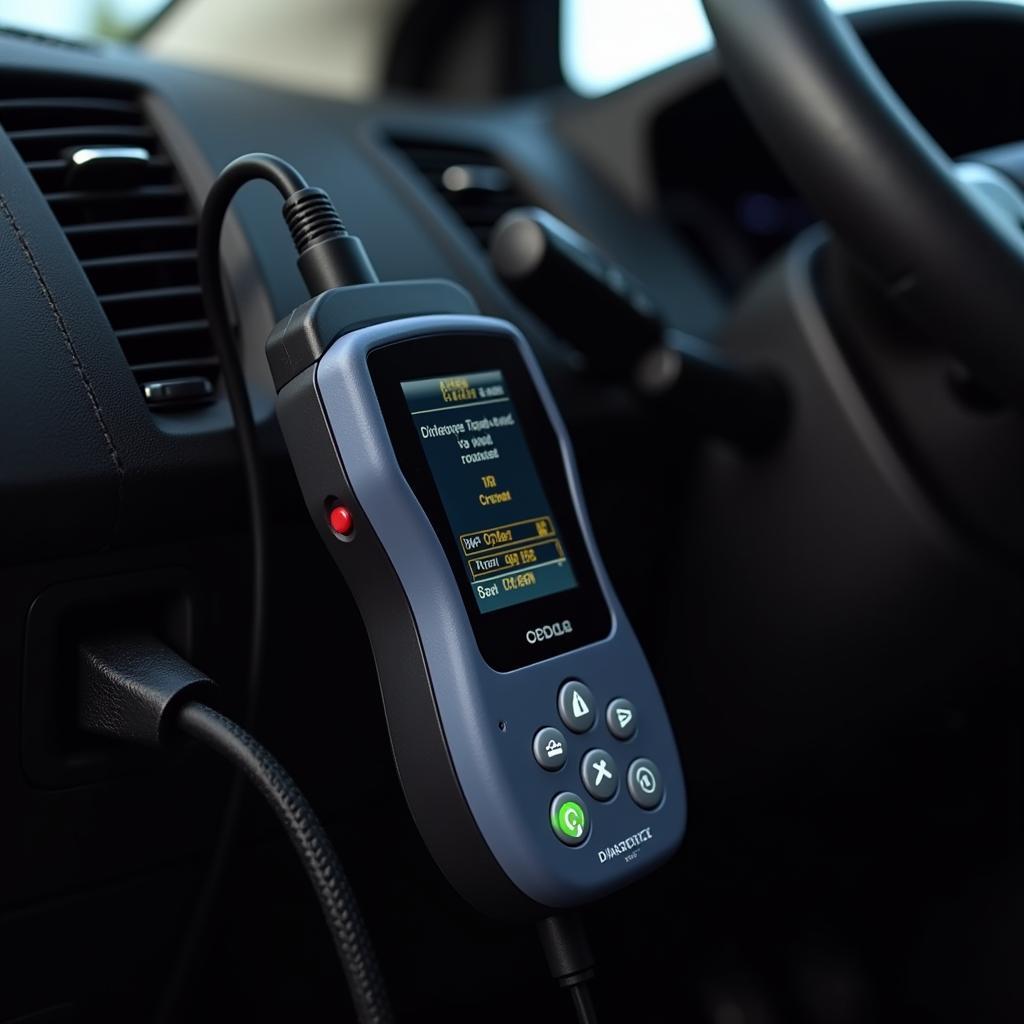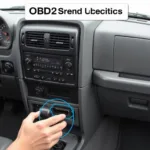The OBD2 database is a treasure trove of information for car owners and mechanics alike. It’s essentially a comprehensive dictionary that deciphers those cryptic trouble codes your car’s computer throws your way. By understanding how to navigate and utilize this valuable resource, you can unlock a deeper understanding of your vehicle’s health and take charge of its maintenance.
What Exactly is an OBD2 Database?
Before we delve into the depths of the OBD2 database, let’s clarify what it is. Your car is equipped with an onboard computer system called the Engine Control Unit (ECU). This system continuously monitors various sensors and components, ensuring everything runs smoothly. When the ECU detects a problem, it logs a specific code, known as an OBD2 code, in its memory. This code is your car’s way of telling you, “Hey, something’s not right!”
This is where the OBD2 database comes in. It acts as the decoder ring for those codes, providing detailed information about the potential issue. Think of it as a translator between your car and you, helping you decipher those confusing alphanumeric jumbles.
Why is the OBD2 Database so Important?
Knowing how to use an OBD2 database empowers you to:
- Diagnose Car Problems: Pinpoint the root cause of warning lights or performance issues.
- Save Money: Avoid unnecessary trips to the mechanic for simple diagnoses.
- Prevent Major Repairs: Address minor problems early before they snowball into costly headaches.
- Gain Peace of Mind: Enjoy the confidence that comes with understanding your car’s needs.
 Car Diagnostic with OBD2 Scanner
Car Diagnostic with OBD2 Scanner
Navigating the OBD2 Database: A Step-by-Step Guide
Using an OBD2 database might seem daunting at first, but it’s surprisingly user-friendly. Here’s a simple breakdown:
- Retrieve the OBD2 Code: Use an OBD2 scanner to read the trouble code stored in your car’s ECU. These handy devices are readily available online and at auto parts stores.
- Access an OBD2 Database: Numerous online resources offer free OBD2 code lookup. Simply search for “OBD2 code database” or use a reputable website like OBDFree.com.
- Input the Code: Enter the alphanumeric code (e.g., P0301) into the search bar of the database.
- Review the Information: The database will provide a detailed description of the code, potential causes, common symptoms, and possible solutions.
Beyond the Basics: Advanced Features of OBD2 Databases
While basic code lookup is incredibly useful, many OBD2 databases offer advanced features for a more comprehensive diagnostic experience:
- Vehicle-Specific Databases: These databases tailor the information to your car’s make, model, and year, providing more accurate results.
- Troubleshooting Guides: Some databases go beyond code definitions and offer step-by-step instructions on how to diagnose and fix common issues.
- Technical Diagrams and Schematics: For the mechanically inclined, some databases provide detailed diagrams of your car’s systems, aiding in pinpointing the faulty component.
Common OBD2 Code Categories
OBD2 codes are categorized by the first letter, giving you a general idea of the system affected:
- P-Codes: Powertrain – Engine, transmission, emissions
- B-Codes: Body – Airbags, power seats, central locking
- C-Codes: Chassis – ABS, traction control, suspension
- U-Codes: Network Communication – Issues with modules communicating
“Understanding these categories can help you narrow down the potential problem area even before delving into the specific code definition,” says Jake Carter, a seasoned mechanic with over 20 years of experience.
Beyond the Code: The Importance of Context
While the OBD2 database is a powerful tool, it’s crucial to remember that it’s just one piece of the diagnostic puzzle. “Treat the code as a starting point, not a definitive diagnosis,” advises Carter. Consider other factors like:
- Your Car’s History: Previous repairs, maintenance records, and driving habits can provide valuable clues.
- Symptoms: Take note of any unusual noises, smells, or performance issues accompanying the warning light.
- Visual Inspection: Don’t underestimate the power of a good old-fashioned visual check under the hood.
OBDFree.com: Your Go-To Resource for OBD2 Information
For reliable, accurate, and easy-to-understand OBD2 information, look no further than OBDFree.com. Our comprehensive database, coupled with insightful articles and guides, empowers you to take control of your car’s health. Whether you’re a seasoned mechanic or a car enthusiast, OBDFree.com is your trusted partner in automotive diagnostics.
FAQs: Your OBD2 Questions Answered
Q: Can I clear OBD2 codes myself?
A: Yes, you can use an OBD2 scanner to clear the codes. However, this is only a temporary solution. The codes will return if the underlying problem isn’t addressed.
Q: Do all cars use the same OBD2 codes?
A: While the OBD2 system is standardized, some manufacturers may have their own unique codes. It’s best to use a vehicle-specific database or consult your car’s service manual for the most accurate information.
Q: How often should I check for OBD2 codes?
A: It’s a good practice to check for codes periodically, especially if you notice any warning lights or performance issues.
Need Expert Assistance? We’re Here to Help!
Have more questions or need personalized guidance with your car’s diagnostics? Our team of automotive experts is just a message away. Contact us via WhatsApp at +1(641)206-8880 or email us at [email protected]. We offer 24/7 support to get you back on the road with confidence.

